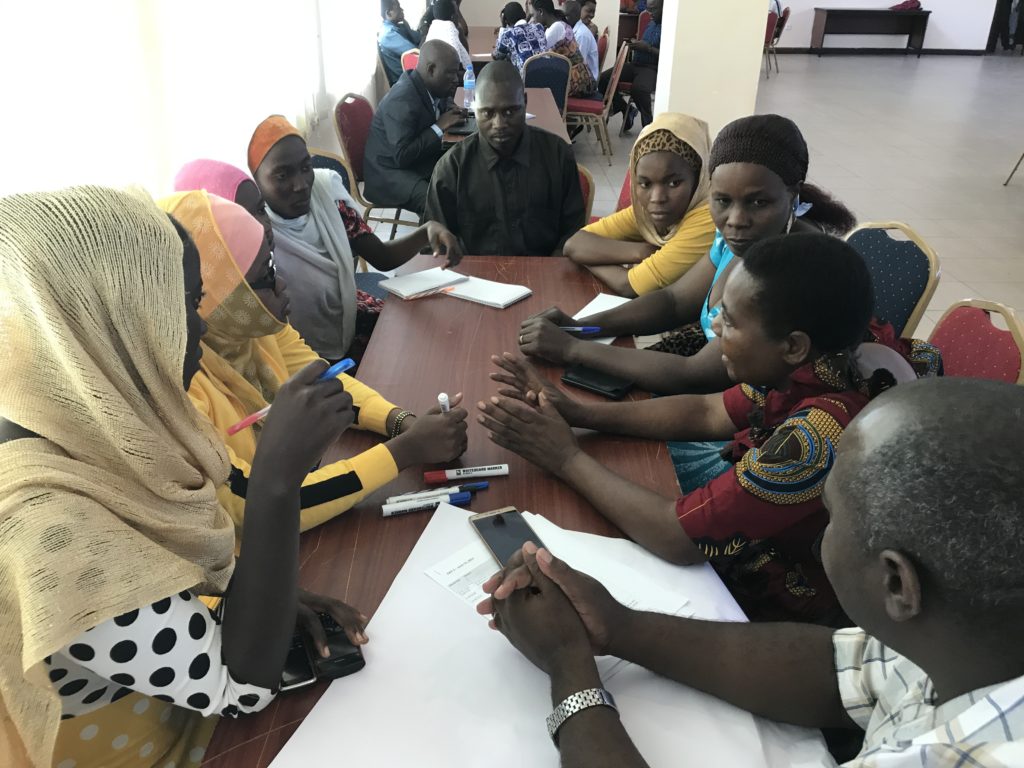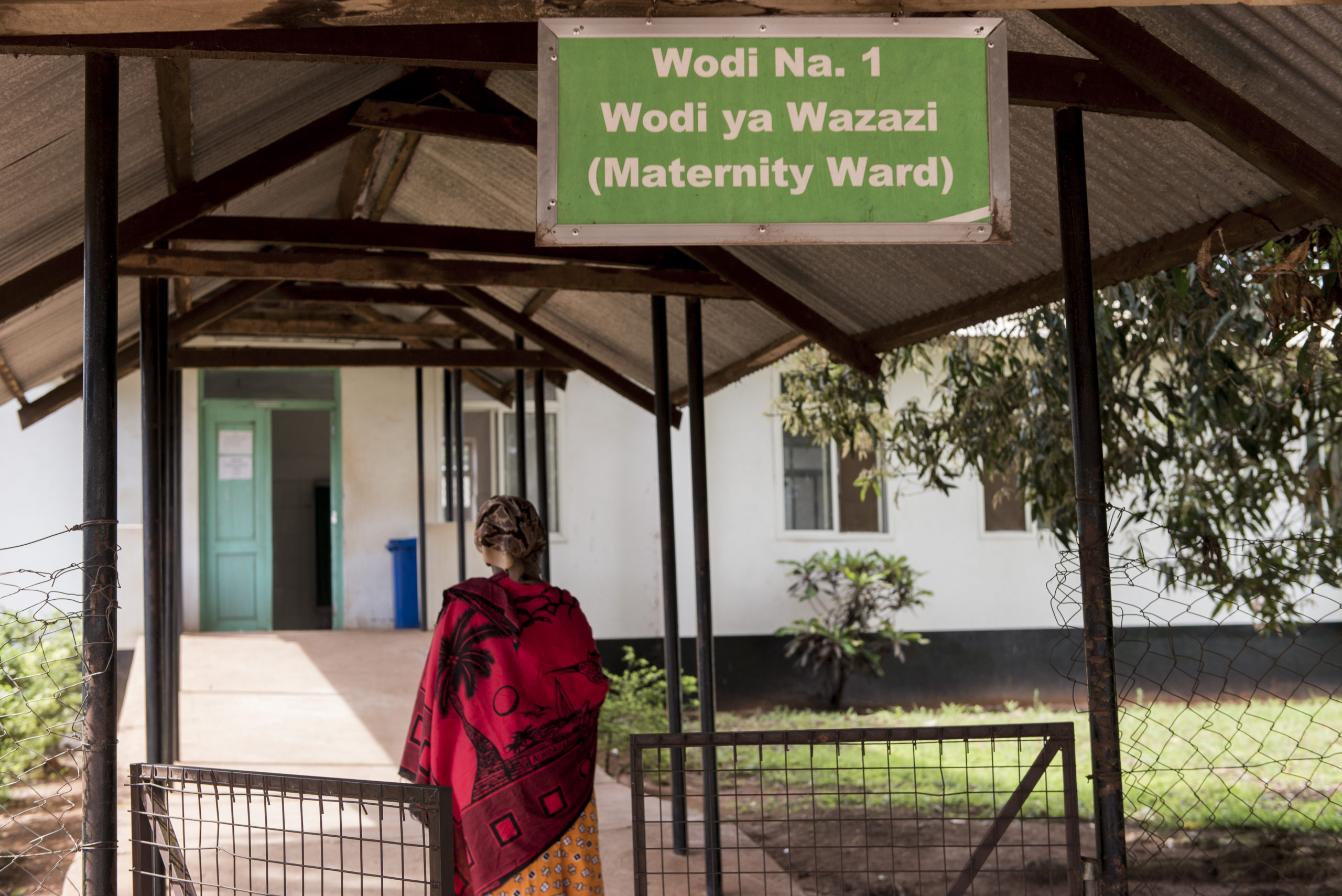
For many women in Tanzania, giving birth can be a solitary affair. The shortage of providers at health facilities often means that women are left alone throughout much of their labor—and some may even deliver alone. Many women choose to give birth at home, far from health facilities, where they have support from family and friends, but that leaves them and their babies in danger in case of a life-threatening complication.
It’s not that surprising that women choose a riskier home delivery, where they can be sure of support and companionship: When women have a trusted companion with them throughout labor and delivery, it not only provides important emotional support, but, evidence shows, it leads to better health outcomes for the mothers and infants. Yet many countries lack national guidelines promoting birth companions in health facilities, denying women this crucial support. Tanzania was among them, until the Thamini Uhai/Vital Strategies team introduced birth companions in health facilities in the Kigoma region in western Tanzania. The results of this pilot, conducted between October 2017 and December 2018, were published in April 2021 in BMC Pregnancy and Childbirth.
Dr. Sunday Dominico, Director of Programs at Thamini Uhai, and one of the lead authors of “Birth companionship in a government health system: a pilot study in Kigoma, Tanzania,” spoke with us about the study’s impressive results.
One of the motivations behind this study was the desire to increase the number of women who choose to give birth in health centers and hospitals. Why is moving away from home births a priority in Tanzania? And what are the barriers?
Fifteen percent of all expectant mothers develop serious and life-threatening complications, especially at the critical time of childbirth. And most of these complications are unpredictable. Even in the most resourced settings, the survival and well-being of women in labor depends on timely access to a skilled health worker and a well-equipped health center or hospital. This is why delivery in a facility is important. Yet there are barriers to facility delivery, not the least of which is the disrespect and abuse some women report receiving from health care workers during childbirth. It’s enough of a problem that the World Health Organization places “respectful care” first in its recommendations for a positive birth experience.
Can you talk about the pilot itself and how it was conducted? Was there any kind of training required for the birth companions?
Since birth companionship had never been a part of maternal health care in Tanzania, we had to get the ministry of health on board. Our first step was looking at the challenges of the environment. We convened a workshop in Kigoma, approaching anyone we thought should be involved in the process, from the health ministry to local government, district health managers, community members, and the potential beneficiaries—mothers-to-be. Having this kind of representation is not a very common approach in Tanzania. We brainstormed together over three days to see how best to introduce the intervention and how best to support it. Together, we developed a “Code of Good Practice,” highlighting what needs to be done and the roles and responsibilities of different stakeholders to ensure smooth implementation.

Were there objections to the introduction of birth companions at the participating health centers? Did these objections change over the course of the study?
Health care workers and government managers were skeptical at first. They were worried the companions would interfere with standard operating procedures and protocols, such as infection prevention and control. The Code of Good Practice mitigated many of these fears by outlining the roles and boundaries of birth companions and how to troubleshoot implementation challenges. Over the course of the study, the objections disappeared. We were sort of shocked, because we had met a lot of resistance when we started this process. At one point we even thought it was not going to happen. But health providers found the companions to be very helpful. The companions helped the health workers with the non-medical aspects of their workload, alerted the provider about changes in the woman’s status and provided emotional support.
How effective was the pilot in terms of changing women’s attitudes about giving birth in a health care facility? And in terms of positive outcomes?
Nearly all the women interviewed were very satisfied with having a companion during labor (97%), delivery (96%) and postpartum (99%). Most women at the intervention sites also reported that the presence of a companion improved their labor, delivery and postpartum experience. Almost all women who had a birth companion said they would return to the facility for care in the future and would recommend the facility to friends and family. Another bonus we observed was a 2% increase in the number of deliveries at the intervention sites, compared to a 6% decrease at comparison sites where there were no birth companions.
Although we expected women to appreciate the companions, the enthusiasm with which the medical providers embraced birth companions was a welcome surprise. The idea of birth companionship is spreading: The government of Tanzania has incorporated birth companionship into national guidelines. We’re very proud to have helped make that happen.
Since 2008, the Thamini Uhai team and its partners have increased maternal health care capacity, improved access to emergency obstetric care and facilities, and increased the use of family planning and health facility delivery. Several other peer-reviewed papers have been published on this work, including:
- Factors related to the practice of vacuum-assisted birth: findings from provider interviews in Kigoma, Tanzania
- Enhancing Maternal and Perinatal Health in Under-Served Remote Areas in Sub-Saharan Africa: A Tanzanian Model
- Introducing eHealth strategies to enhance maternal and perinatal health care in rural Tanzania
- Increasing the availability and quality of caesarean section in Tanzania
- Reintroducing vacuum extraction in primary health care facilities: a case study from Tanzania
About Vital Strategies Vital Strategies is a global health organization that believes every person should be protected by a strong public health system. We work with governments and civil society in 73 countries to design and implement evidence-based strategies that tackle their most pressing public health problems. Our goal is to see governments adopt promising interventions at scale as rapidly as possible. To find out more, please visit vstrategystage.wpengine.com or Twitter @VitalStrat.
